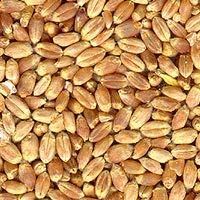 | « Back to article | Print this article |
While the motives of the Bill are of course laudable, there is every likelihood that the consequences of its passage will be dire.
 The Lok Sabha, which has typically failed to do much business during this monsoon session, nevertheless managed to sit down for nine hours and pass the United Progressive Alliance’s flagship legislation, the food Security Bill.
The Lok Sabha, which has typically failed to do much business during this monsoon session, nevertheless managed to sit down for nine hours and pass the United Progressive Alliance’s flagship legislation, the food Security Bill.
This is a severe indictment of Indian politics: even with a Bill as flawed and as untimely as this one, it seems the political imagination to craft an opposition to such a measure is simply lacking.
While the motives of the Bill are of course laudable, there is every likelihood that the consequences of its passage will be dire.
For one, India’s fiscal situation, particularly that of the Centre, has got out of hand in the years since 2008 -- and so the government should have been working to bring down expenditure, not raise it.
All those who compellingly argue that food to the hungry should be the first priority for government expenditure must also explain why this law was not passed simultaneously with a reduction in other systemic expenditure by the government that would have neutralised its fiscal impact.
It is true, of course, that the law will take some time to come into effect -- the deadline for states to comply with it has in fact been extended.
Thus, the finance minister’s choice to budget only an extra Rs 10,000 crore (Rs 100 billion) for food security this year seems justified.
However, this allocation will inevitably swell in coming years; and the claim that it will require a maximum of only Rs 25,000 crore (Rs 250 billion) additional expenditure has been sharply contested.
At a time when India’s shaky macroeconomic indicators are the subject of worldwide attention, that its government has chosen to vastly expand the future financial outlays of the state will not send out a good message.
Credit rating agencies, foreign institutional investors and domestic investors will all take note, and confidence in India’s